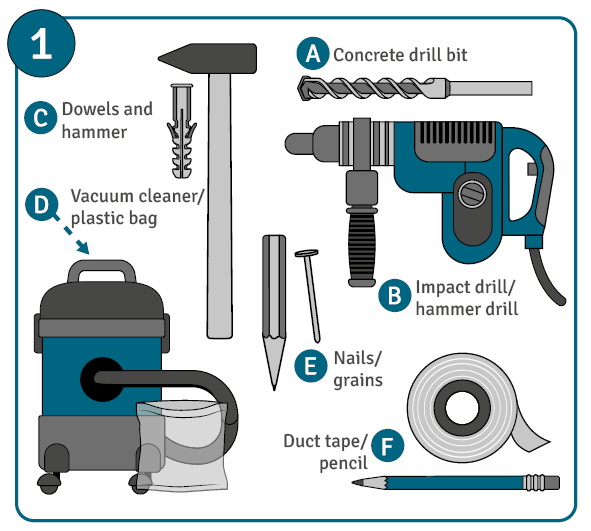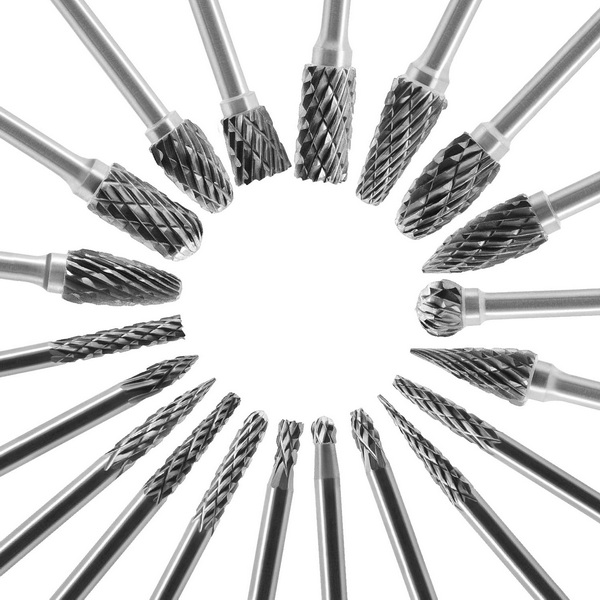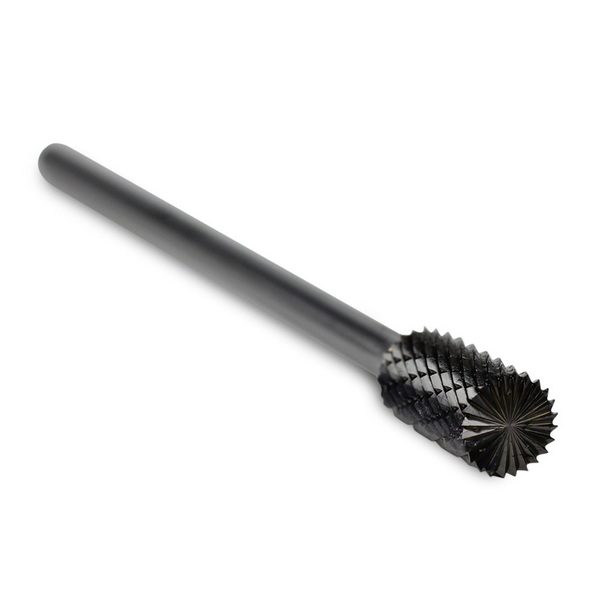Content Menu
● Introduction to Cemented Carbide Technology
● Material Science Behind WC-Co Composites
>> Microstructural Engineering
>> Cobalt's Critical Roles
● Sector-Specific Applications
>> 1. Metal Cutting Industry
>> 2. Petroleum Exploration
>> 3. Wear Components
● Manufacturing Process & Quality Control
>> Production Workflow
>> Critical Quality Parameters
● Safety Protocols: Cemented Carbide Product with Cobalt Binder SDS
>> Material Processing
● Conclusion
● FAQs
>> 1. How does cobalt percentage affect cemented carbide pricing?
>> 2. What's the proper storage method for WC-Co products?
>> 3. Can WC-Co be welded?
>> 4. What's the typical lead time for custom WC-Co parts?
>> 5. How does cobalt binder impact EDM machining?
● Citations:
Cemented carbide products with cobalt binders have become foundational materials across heavy industries due to their unparalleled combination of hardness, durability, and thermal stability. These composites—primarily composed of tungsten carbide (WC) particles bonded by cobalt metal—dominate applications requiring extreme wear resistance and structural integrity under stress. Below, we explore their technical merits, industrial applications, safety protocols, and emerging innovations.

Introduction to Cemented Carbide Technology
Cemented carbides (WC-Co) revolutionized industrial manufacturing when first commercialized in 1927 by Krupp. Today, this material family holds 68% of the global cutting tools market (McKinsey, 2024) due to its unique combination of properties:
- Hardness: 3x harder than high-speed steel
- Compressive strength: 6,000 MPa (comparable to diamond)
- Thermal conductivity: 80-110 W/mK (dissipates heat effectively)
The cobalt binder (typically 3-25% by weight) acts as metallic glue, enabling these composites to withstand forces exceeding 4 GPa in modern machining operations.
Material Science Behind WC-Co Composites
Microstructural Engineering
The material's performance stems from its dual-phase microstructure:
1. Tungsten Carbide Grains (1-5 μm):
- Hexagonal crystal structure
- Hardness: 2,600 HV (Vickers)
- Melting point: 2,870°C
2. Cobalt Matrix:
- FCC crystalline structure
- Ductility: 15-25% elongation
- Melting point: 1,495°C
This structure creates a percolation network where cobalt fills WC grain boundaries, absorbing impact energy through plastic deformation.
Cobalt's Critical Roles
- Wettability: Cobalt's contact angle of 15° with WC enables complete infiltration during liquid-phase sintering
- Stress Distribution: Reduces crack propagation by 40% vs. nickel binders (ASM International, 2023)
- Oxidation Barrier: Forms protective CoWO₄ layer at 500-700°C

Sector-Specific Applications
1. Metal Cutting Industry
Tool Inserts (ISO K/KM grades):
- Turning: DNMG 150608 inserts machine 4140 steel at 350 m/min
- Milling: 6-flute end mills achieve Ra 0.8 μm in Ti-6Al-4V
- Drilling: 20xD drills maintain ±0.02 mm tolerance over 10,000 holes
2. Petroleum Exploration
PDC Drill Bits:
- 13mm cutters withstand 25 kN axial load at 3 km depth
- Cobalt content: 16% for shock resistance
- 2024 Market: $2.1B (GlobalData)
SDS Compliance Highlight:
All WC-Co drilling tools require SDS documentation per OSHA 29 CFR 1910.1200, particularly sections:
- Section 6: Accidental release measures (containing cobalt dust)
- Section 9: Physical/chemical properties (density: 14.95 g/cm³)
3. Wear Components
| Component | Service Life | Cobalt % |
| Wire Drawing Die | 8,000 km | 9% |
| Valve Seat | 5 years | 12% |
| Shot Blast Nozzle | 1,200 hrs | 6% |
Manufacturing Process & Quality Control
Production Workflow
1. Powder Preparation:
- WC powder: 0.8-2.0 μm (FSSS)
- Cobalt powder: 1.2-1.6 μm
- Mixing: 2-12 hrs in attritor mill
2. Compacting:
- Pressure: 100-300 MPa
- Green density: 50-55% theoretical
3. Sintering:
- Temperature: 1,350-1,500°C
- Atmosphere: Vacuum/H₂
- Shrinkage: 18-20% linear
Critical Quality Parameters
- Magnetic Saturation: 75-95% (measures Co distribution)
- Palmqvist Toughness: 10-15 MPa·m⊃1;/⊃2;
- Coercive Force: 15-25 kA/m (indicates WC grain size)
Safety Protocols: Cemented Carbide Product with Cobalt Binder SDS
All WC-Co products require strict SDS adherence due to cobalt's OSHA PEL of 0.1 mg/m³. Key compliance areas:
Material Processing
- Grinding: Use wet methods with 5,000 mg/kg
- Cobalt bioaccumulation potential: High
Conclusion
Cemented carbide products with cobalt binders continue to dominate extreme-performance applications through continuous material innovation. While cobalt remains essential for toughness, emerging binder technologies and rigorous SDS compliance programs address both performance needs and workplace safety. The industry's shift toward gradient structures and recycled materials promises sustainable growth, with the global WC-Co market projected to reach $25.4B by 2030 (Grand View Research).

FAQs
1. How does cobalt percentage affect cemented carbide pricing?
Every 1% Co increase raises raw material costs by $3.50/kg (2024 LME Co: $32/kg).
2. What's the proper storage method for WC-Co products?
Store in ventilated areas <40°C/30% RH, separated from acids per SDS Section 7.
3. Can WC-Co be welded?
Only via vacuum brazing (<1,100°C) using AWS BAg-24 filler metal.
4. What's the typical lead time for custom WC-Co parts?
14-21 days for standard grades; 6-8 weeks for gradient structures.
5. How does cobalt binder impact EDM machining?
Higher Co content (12%+) improves EDM speed by 18% but requires dielectric filtration.
Citations:
[1] https://www.zhongbocarbide.com/what-are-the-advantages-of-cemented-carbide-products-with-cobalt-binder.html
[2] https://patents.google.com/patent/US20170057878A1/en
[3] https://www.besttungsten.com/blogs-detail/understanding-cemented-carbide-components-and-their-industrial-applications
[4] https://media.napaonline.com/is/content/GenuinePartsCompany/863925pdf
[5] https://www1.mscdirect.com/MSDS/MSDS00055/02280006-20170104.PDF
[6] https://www.diva-portal.org/smash/get/diva2:1220041/FULLTEXT01.pdf
[7] https://ceramics.org/ceramic-tech-today/researchers-investigate-feasibility-of-nanoceramics-as-binder-in-cemented-carbide-tools/
[8] https://saturnmachineworks.com/wp-content/uploads/2020/11/20-07-03-Saturn-Safety-Data-Sheet-for-Tungsten-Carbide-with-Cobalt.pdf
[9] https://www.basiccarbide.com/assets/pdfs/basic-carbide-safety-data-sheet.pdf
[10] https://www.itia.info/wp-content/uploads/2024/06/ITIA_CCASS_29052024.pdf
[11] http://www.carbidetechnologies.com/wp-content/uploads/2018/12/SDS-CARBIDETECHNOLOGIES.pdf
[12] https://www.carbide-products.com/es/blog/cemented-carbide-product-with-cobalt-binder/
[13] https://www.zzbetter.com/new/The-Most-Common-Binder-Material-Used-in-A-Carbide-Tool.html
[14] https://www.samaterials.com/tungsten-carbide-cobalt-an-overview.html
[15] https://www.cobaltinstitute.org/essential-cobalt-2/cobalt-innovations/hard-metal/
[16] https://www.carbide-products.com/blog/cemented-carbide-product-with-cobalt-binder/
[17] https://www.carbide-products.com/it/blog/cemented-carbide-product-with-cobalt-binder/
[18] https://www.diva-portal.org/smash/get/diva2:1237216/FULLTEXT01.pdf
[19] https://www.goodfellow.com/eu/material/compounds/ceramic-composites/tungsten-carbide-cobalt-co-10-tube
[20] https://www.academia.edu/113339898/CHARACTERIZATION_OF_DIFFERENT_WC_Co_CEMENTED_CARBIDE_TOOLS?uc-sb-sw=50379894
[21] https://zzhthj.en.made-in-china.com/product/fQpRYahMmbVn/China-Cobalt-Binder-Tungsten-Carbide-Seat.html
[22] https://www.mdpi.com/1996-1944/18/1/129
[23] https://www.mdpi.com/1996-1944/16/16/5560
[24] https://scispace.com/pdf/the-wear-properties-of-tungsten-carbide-cobalt-hardmetals-3p0rgkhmil.pdf
[25] https://www.mdpi.com/2075-4701/13/1/171
[26] https://www.innovativecarbide.com/wp-content/uploads/2020/07/SDS-2018-REV-1.pdf
[27] https://22042510.fs1.hubspotusercontent-na1.net/hubfs/22042510/DataFlute/BPT%20Safety%20Data%20Sheet%20-%2029MAY2015.pdf
[28] https://webshop.tungaloymexico.com.mx/downloads/action/show_file/product/2071727/file_type/MSDS
[29] https://www1.mscdirect.com/MSDS/MSDS00015/09906199-20171109.PDF
[30] https://www1.mscdirect.com/MSDS/MSDS00022/78017944-20170802.PDF
[31] https://micronmetals.com/product/tungsten-carbide-6-cobalt-binder/
[32] https://www.kennametal.com/us/en/products/carbide-wear-parts/fluid-handling-and-flow-control/separation-solutions-for-centrifuge-machines/tungsten-carbide-materials.html
[33] https://www.bangerter.com/en/tungsten-carbide
[34] https://en.wikipedia.org/wiki/Cemented_carbide
[35] https://www.hyperionmt.com/en/Resources/materials/cemented-carbide/
[36] https://www.allied-material.co.jp/en/techinfo/hard-metal/use.html
[37] https://www.scmtstool.com/blog/What-Are-the-Industrial-Applications-of_bid-316545588.html
















